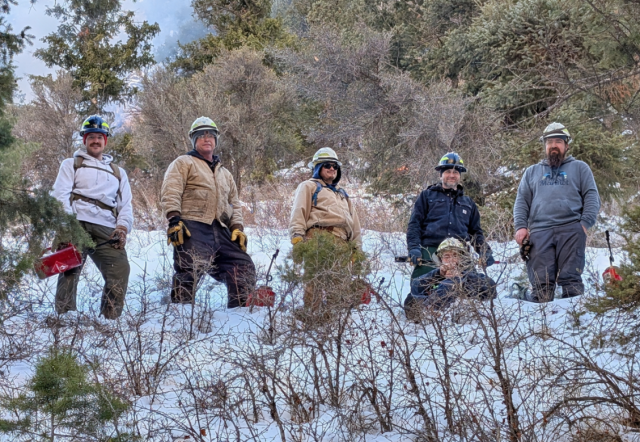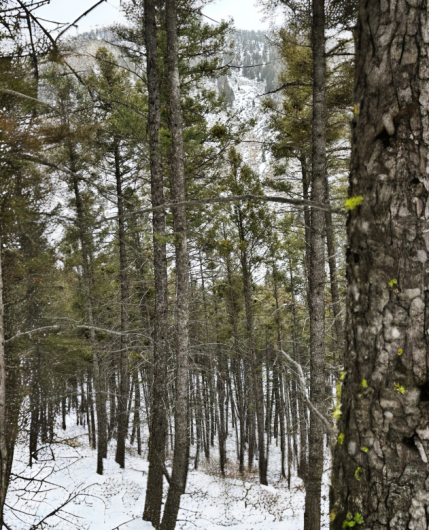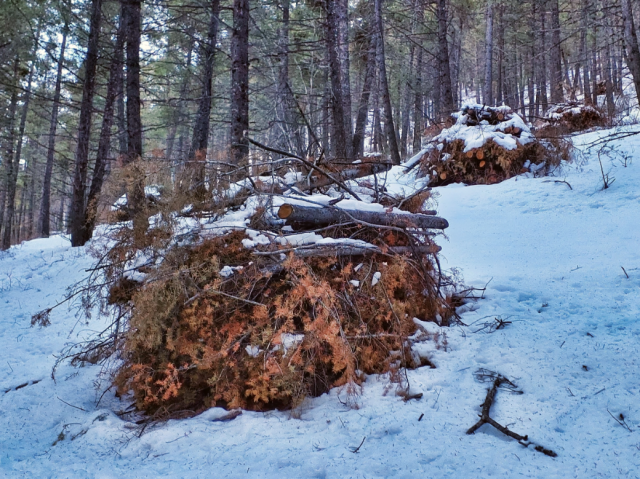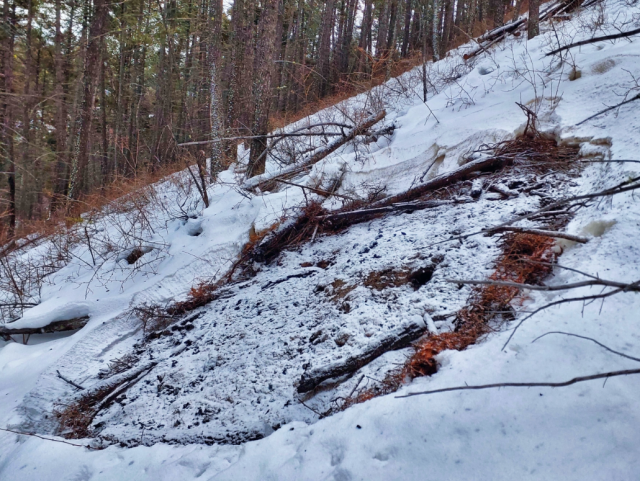Protecting the community: Challis Field Office takes steps to ensure a fire resilient landscape
In the picturesque Idaho backcountry, a ghost town known as Bayhorse stands as a reminder of Idaho’s gold rush days. In the late 1800s, the Historic Bayhorse Townsite thrived with miners searching for gold, silver, and lead. Now it is a cherished destination for recreational visitors seeking a taste of history and outdoor adventure. But along with its charm comes a challenge – the looming threat of wildfire.
To combat this potential wildfire risk, fast forward to January 2025, when a team from several BLM Idaho Falls District offices ventured into the cold, snowy landscape to proactively keep Bayhorse safe by burning piles of wood in the surrounding forested lands managed by the BLM Challis Field Office.
This mission is called the Bayhorse Fuels Reduction Project, and these controlled burns not only serve to preserve a vital part of Idaho’s cultural legacy, but they also protect the local community and sustain the health, diversity, and productivity of public lands.

Ghosts of the past are not the only things haunting the area. Dense forests surrounding the historic townsite, made up of tightly packed trees on steep slopes, mean fire can spread quickly, threatening the town and recreationalists who camp at the nearby lakes and use popular routes that lead through the forest to the town.

With every pile burned, the team cleared the landscape of hazardous fuels, which is especially important in areas designated as Wildland Urban Interfaces (WUIs), like Bayhorse is. This means it is in proximity of urban development and natural landscapes.
Being a WUI area raises the stakes significantly for fire management. As identified in our Wildlife Mitigation Plan, if a wildfire were to ignite, evacuating the campgrounds and townsite would be exceedingly complex.
Understood within this scope, work began on the Bayhorse Fuels Reduction Project in 2023, with a goal of reducing the risk of fire, improving public safety, and enhancing forest health. In designated areas along the Bayhorse road, crews used chainsaws to remove younger, smaller trees from the understory of the forest which could lead to an intense and damaging crown fire.
As crews cut trees, they organized them into piles to dry. On Jan. 22, 2025, conditions were favorable to burn this wood. With snowy, cold conditions ensuring minimal risk of fires spreading from slash piles to the surrounding forest, the team successfully burned 50 acres of piles cut in 2023. That action consumed hazardous fuels that would otherwise lay on the forest floor and contribute to a wildfire.



As we move into 2025, the work does not end. Challis staff will continue tree thinning and pile burning to enhance forest health and protect the community.

Suppressing wildfires is incredibly costly and puts wildland firefighters and the public at risk. By investing time and resources in proactive measures like the Bayhorse Fuels Reduction Project, BLM staff are acting as wise stewards of taxpayer money. By reducing fuels for these BLM-managed lands today, this popular cultural resource and recreation hub will be preserved for many years to come, all while saving taxpayer dollars and protecting firefighters and the public.
Caleb Dankle, Natural Resource Specialist, BLM Idaho
